Answer question 1,2 & 3 by appropriately matching the information given in the three columns of the following table .
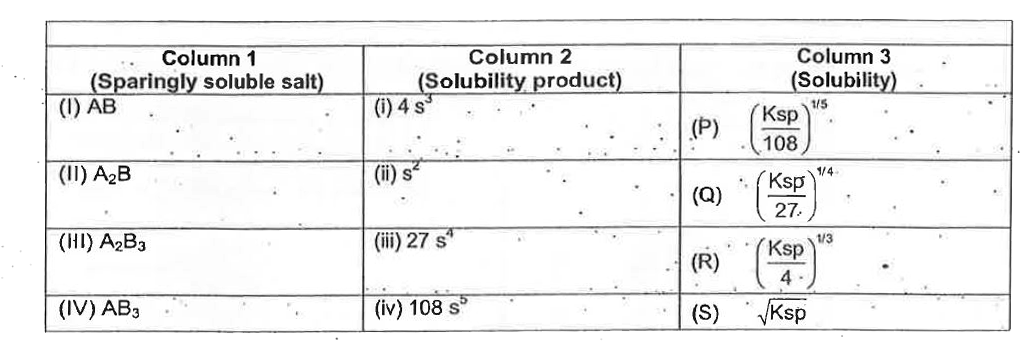
Which of the following is correct ?
(I) (i) (R )
(II) (i) (R )
(III) (iv) (Q)
(IV) (iii) (P)
Step by step video & image solution for Answer question 1,2 & 3 by appropriately matching the information given in the three columns of the following table . Which of the following is correct ? by Chemistry experts to help you in doubts & scoring excellent marks in Class 12 exams.
Updated on:21/07/2023Similar Questions
Answer questions 1, 2 and 3 by appropriately matching the information given in the three columns of the following table.

View SolutionAnswer question 1,2 & 3 by appropriately matching the information given in the three columns of the following table .

Which of the following combination is incorrect ?
View Solution
Knowledge Check
In each question, there is a table having 3 columns and 4 rows. Based on the table, there are 3 questions. Each question has 4 options (a), (b), ( c) and (d), ONLY ONE of these four options is correct.
A ball is projected from the ground with velocity v such that its range is maximum. Answer the questions by appropriately matching the information given in the three columns of the following table.
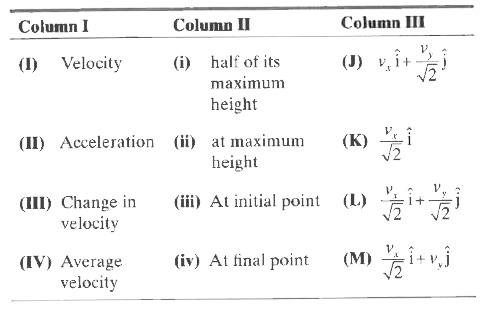
Which of the following is the correct columns match ?A(IV) (iii) (K)B(II) (iv) (L)C(III) (ii) (M)D(I) (i) (J)appropriately matching the information given in the three columns of the following table.
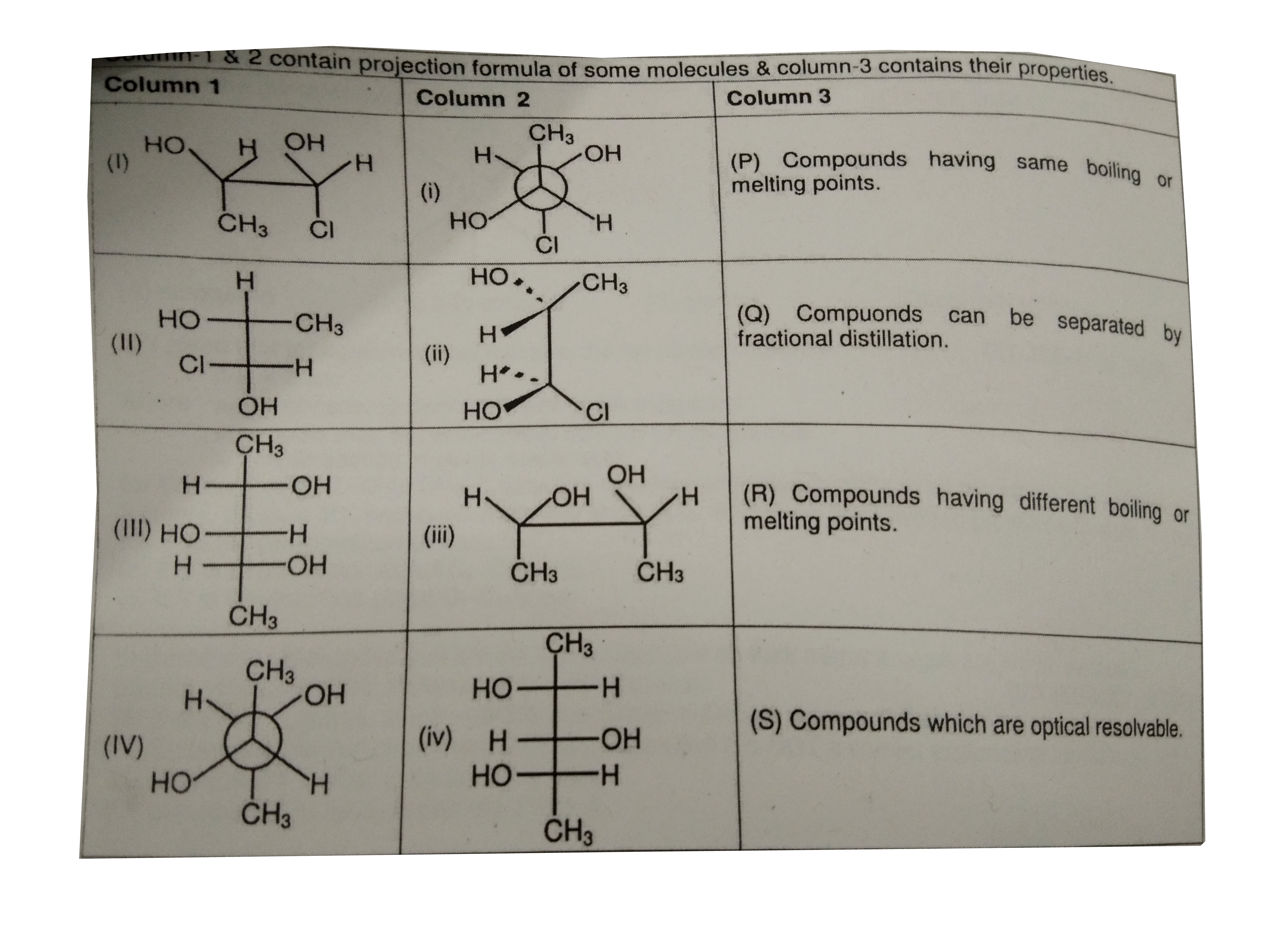
Which of the following combination gives correct information.A(I) (ii) (Q)B(II) (iii) (P)C(III) (iv) (P)D(IV) (iii) (P)In each question, there is a table having 3 columns and 4 rows. Based on the table, there are 3 questions. Each question has 4 options (a), (b), ( c) and (d), ONLY ONE of these four options is correct.
The particle is projected in projectile motion with velocity u at an angle θ with horizontal is represented by y=Px−Qx2. Answer the questions by appropriately matching the information given in the three columns of the following table.
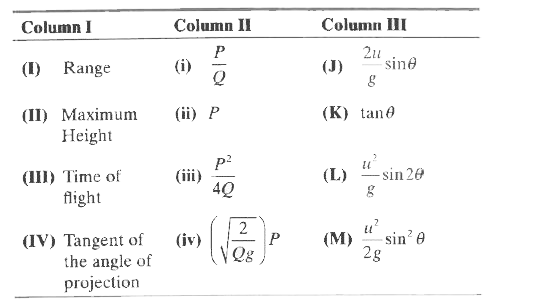
Which of the following combination shows the correct relation of quantities when total displacement of the particle is zero?A(I) (i) (M)B(III) (iv) (J)C(I) (iii) (L)D(IV) (ii) (K)
Match the column in the following table :
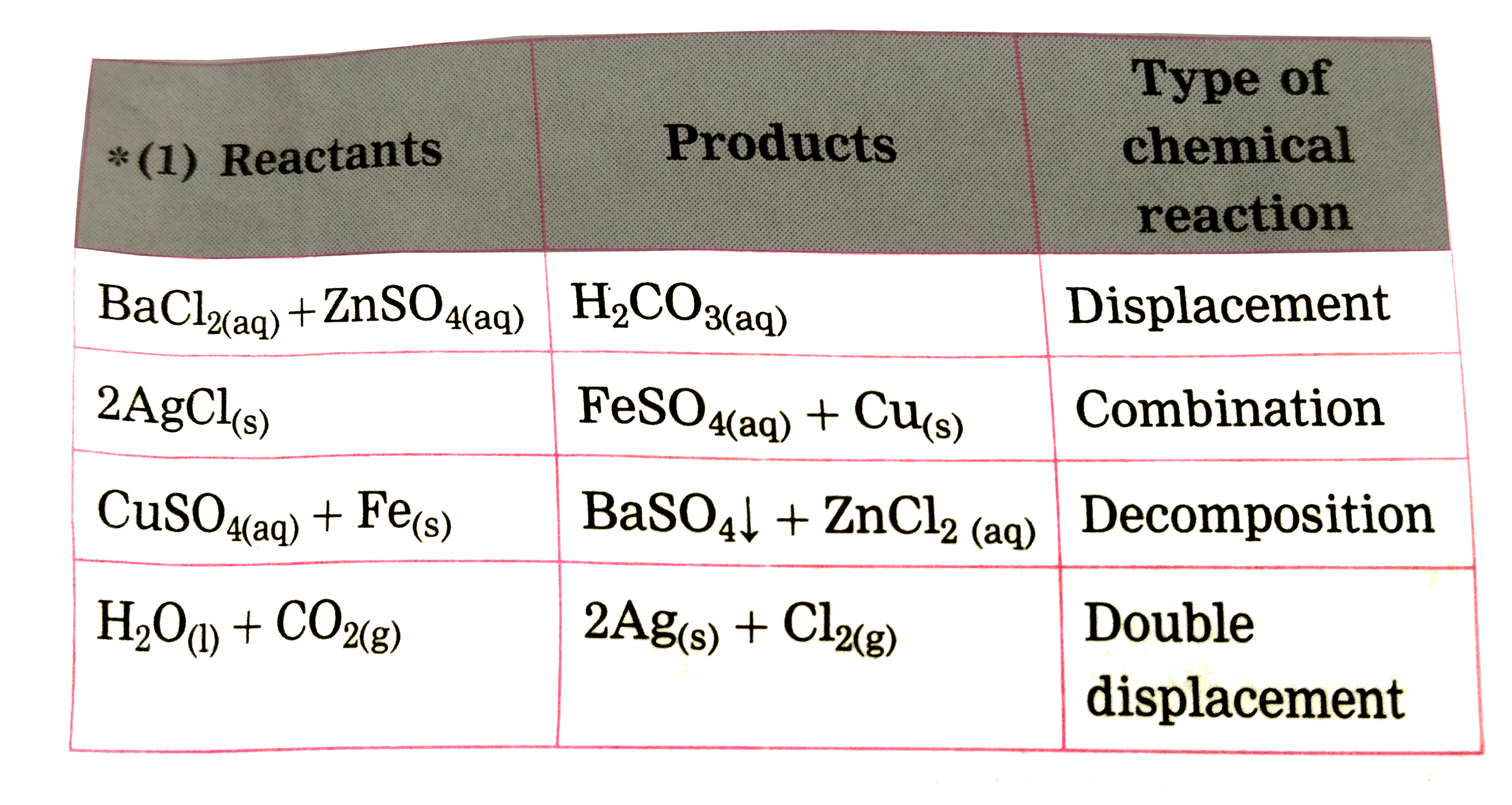
View SolutionAnswer Q 1,2 and 3 by appropriately matching the information given in the columns of the following table .
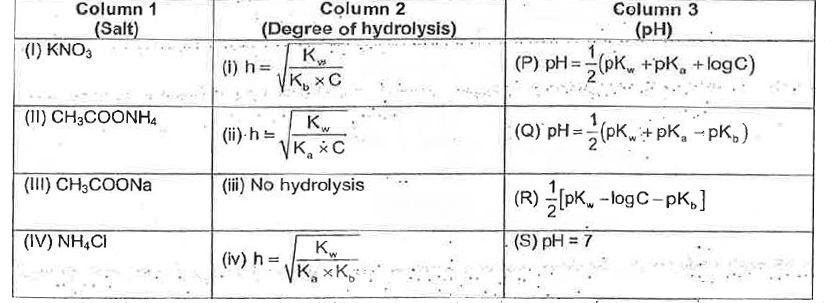
Which of the following is CORRECT for NH4Cl ?
View SolutionAnswer 12, 13 and 14 by appropriately matching the information given in the three columns of the following table.
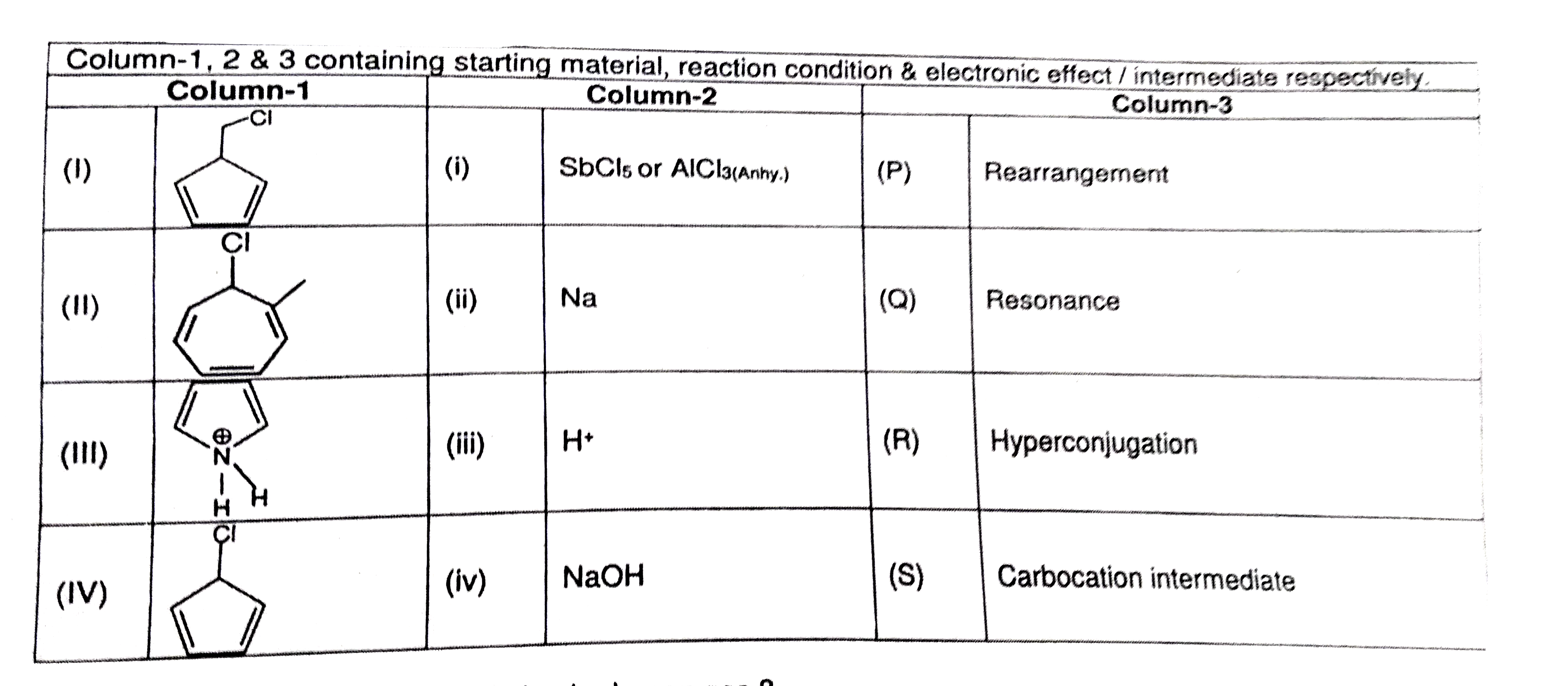
In which amongs the following aromatic product will not form?
View SolutionIn each question, there is a table having 3 columns and 4 rows. Based on the table, there are 3 questions. Each question has 4 options (a), (b), ( c) and (d), ONLY ONE of these four options is correct.
A ball is projected from the ground with velocity v such that its range is maximum. Answer the questions by appropriately matching the information given in the three columns of the following table.
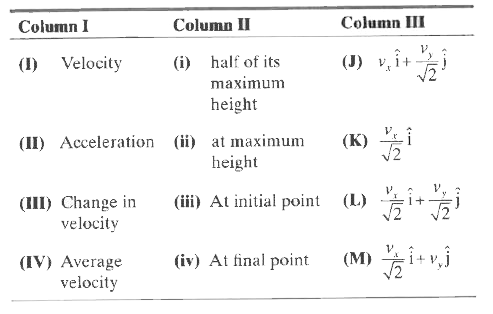
Which is the correct option to represent a point on trajectory at which the particle has only one component of which quantity?
View Solution1, 2 and 3 by appropriately matching the information given in the three columns of the following table.

The CORRECT combination is:
View Solution

